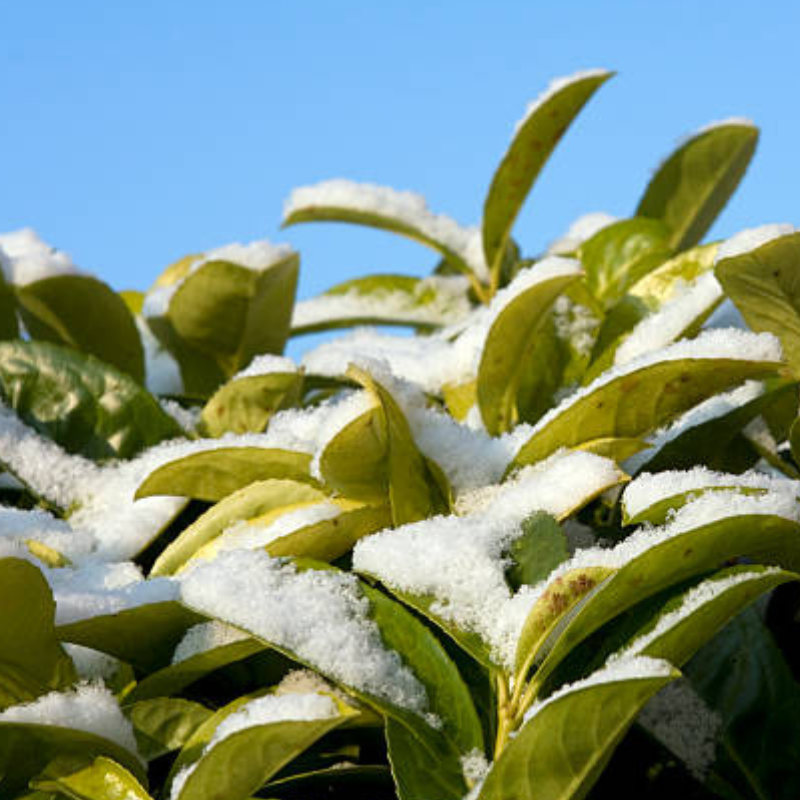Rhododendrons exhibit a fascinating adaptation to cope with cold conditions. As temperatures drop, rhododendron leaves curl and hang down, creating a protective layer that reduces moisture loss. This behaviour eases the strain on the roots, which would otherwise struggle to extract moisture from frozen soil.
Additionally, when snow falls, it interacts uniquely with rhododendron foliage. As snowflakes touch the pointed flower buds, they break and slide down the leaves. This natural process helps prevent excessive snow buildup on the plant, reducing the weight that can damage branches.
Moreover, the drooping leaves form a sheltered space around the stem, trapping warmer air and providing insulation against freezing temperatures. This microclimate created by the drooping leaves aids in preserving the plant’s vital functions during winter.
It’s essential to support these natural adaptations by maintaining a thick layer of organic mulch around rhododendrons. This mulch not only protects the shallow root system but also helps conserve moisture and regulate soil temperature. Providing occasional deep watering on warmer days encourages recovery from cold snaps, ensuring your rhododendrons thrive throughout the winter season.
- A close-up of Rhododendron leaves dusted with snow, drooping gracefully against a clear blue sky.
- Close-up of plant buds and leaves covered with a layer of property frost. The frost crystals are visible on the edges of the leaves and buds.


